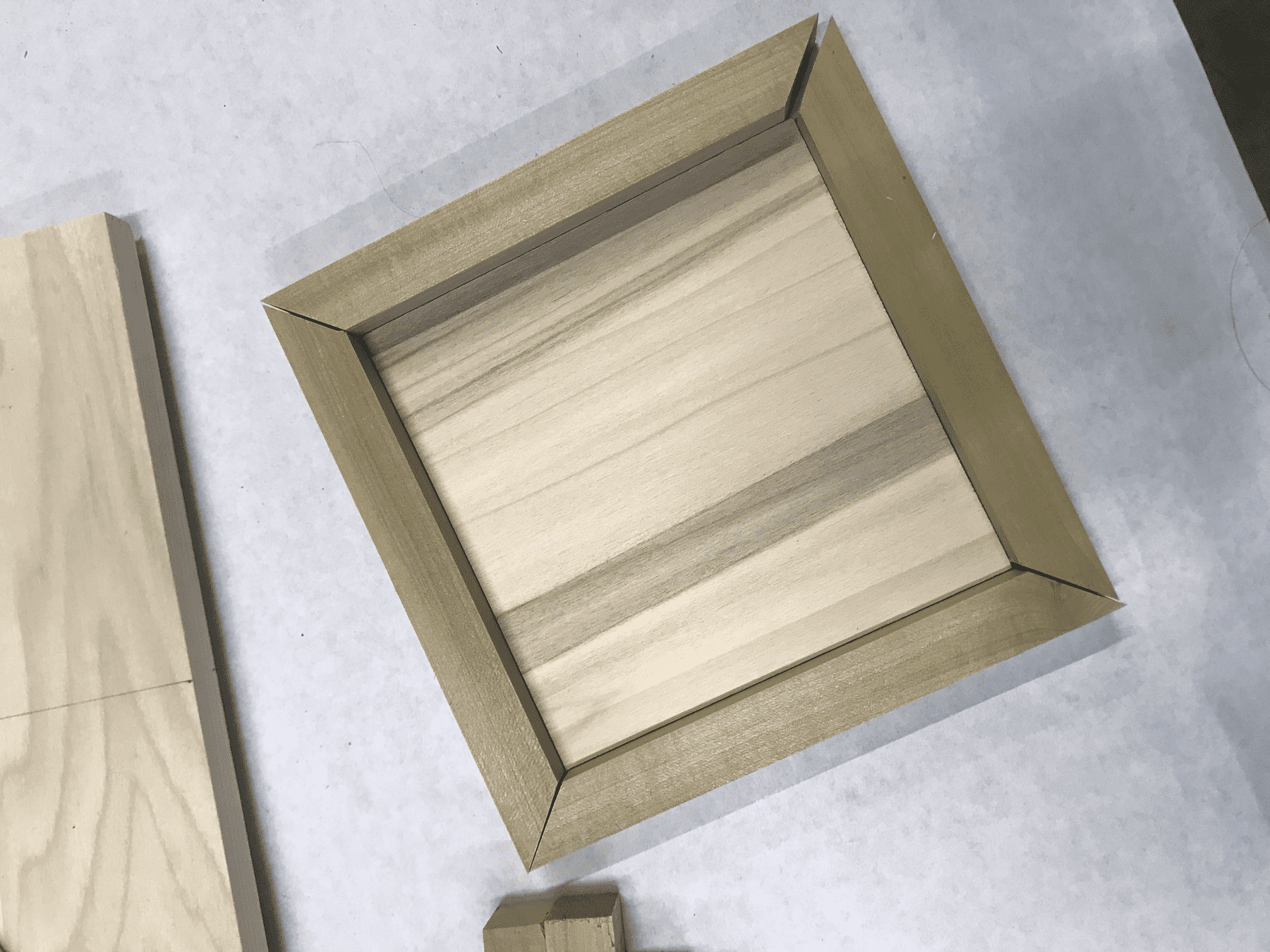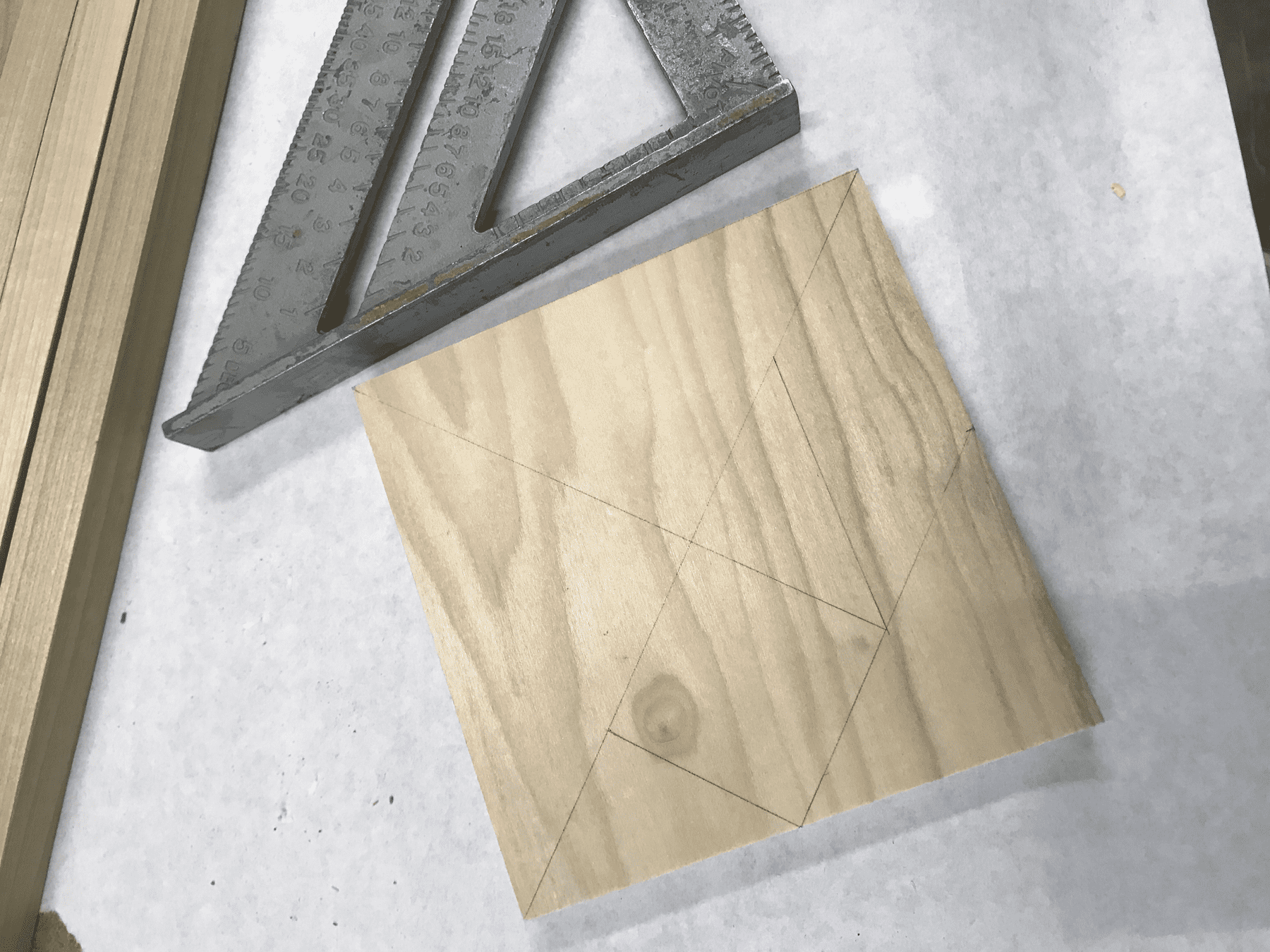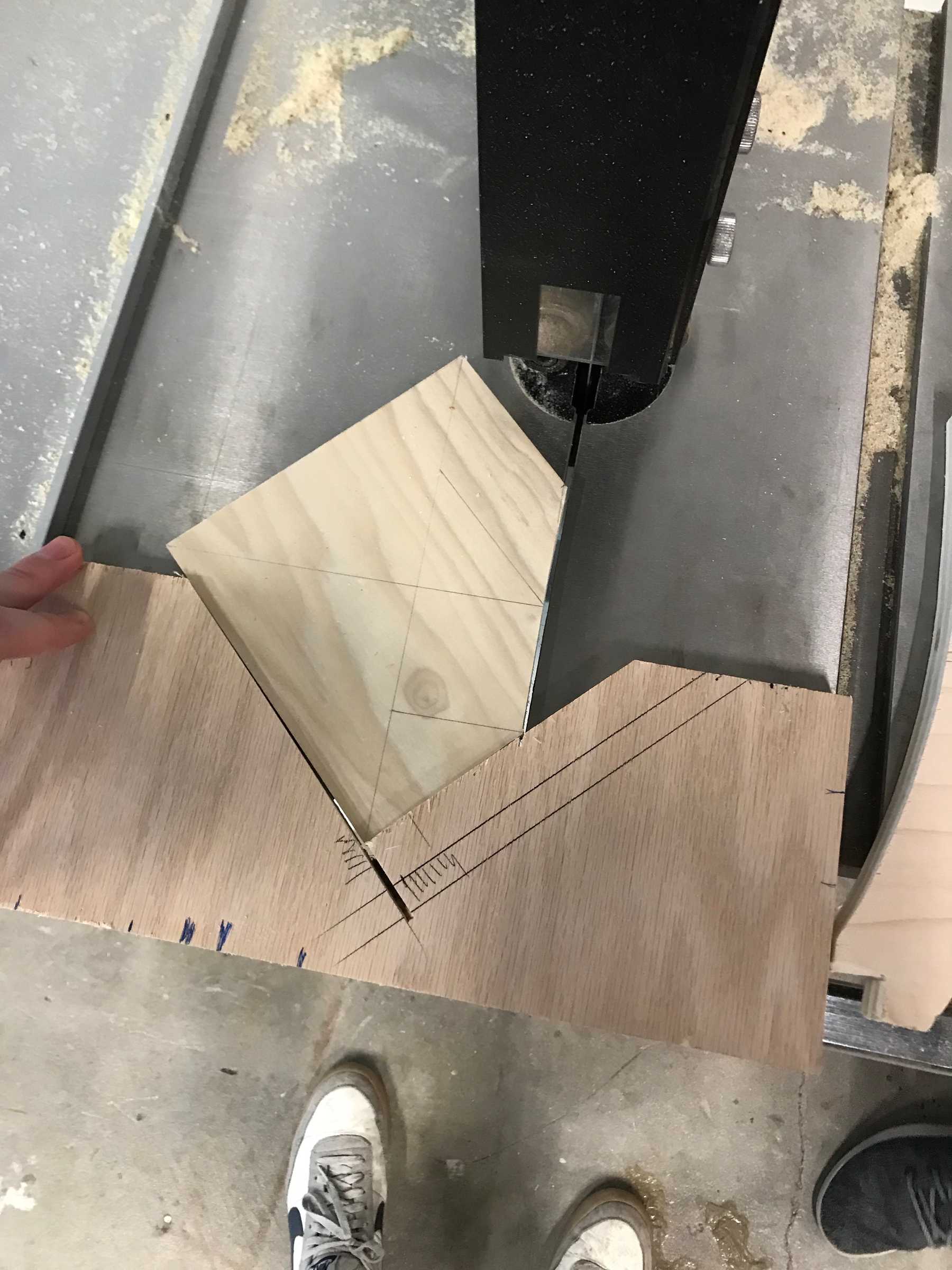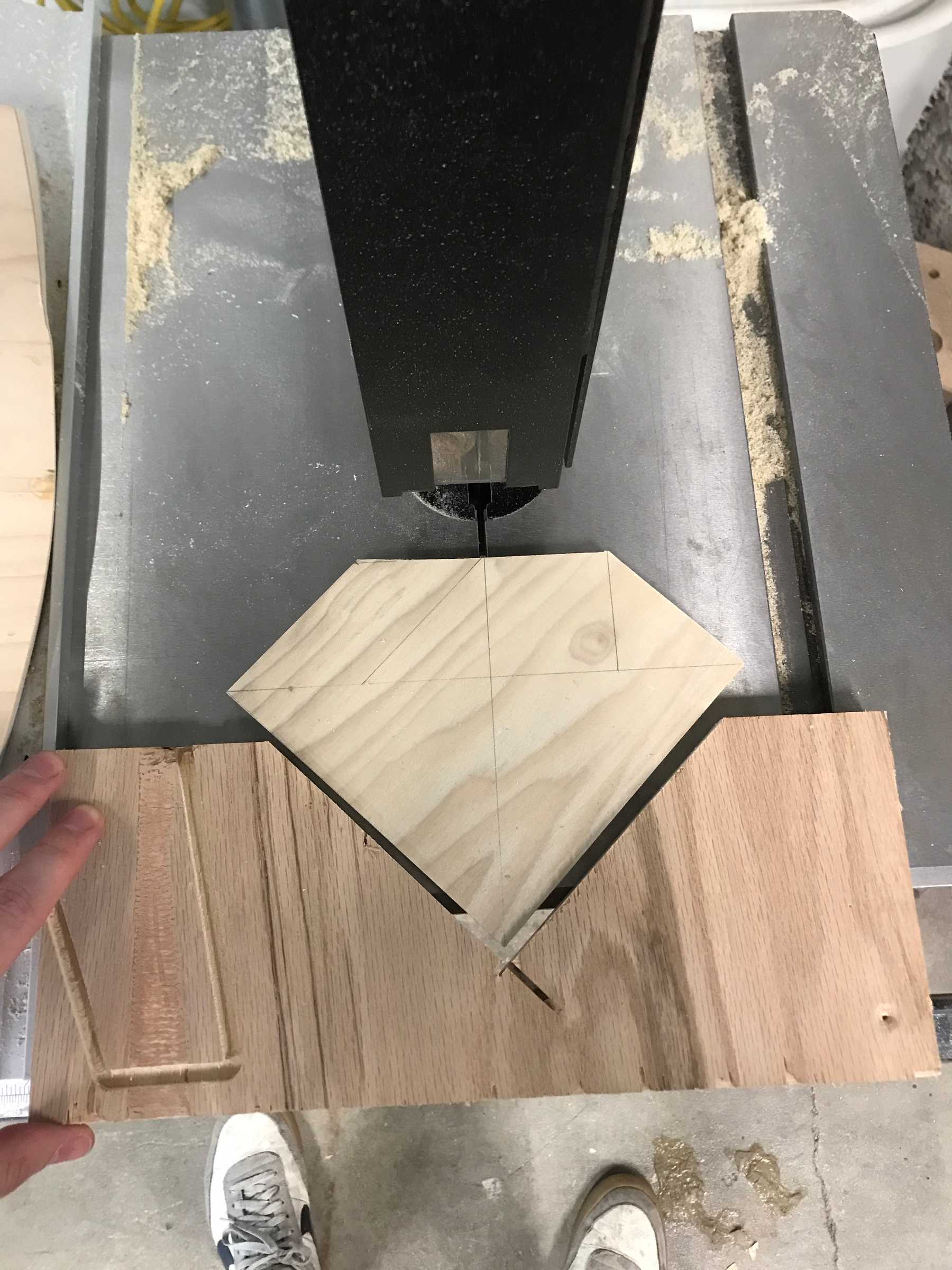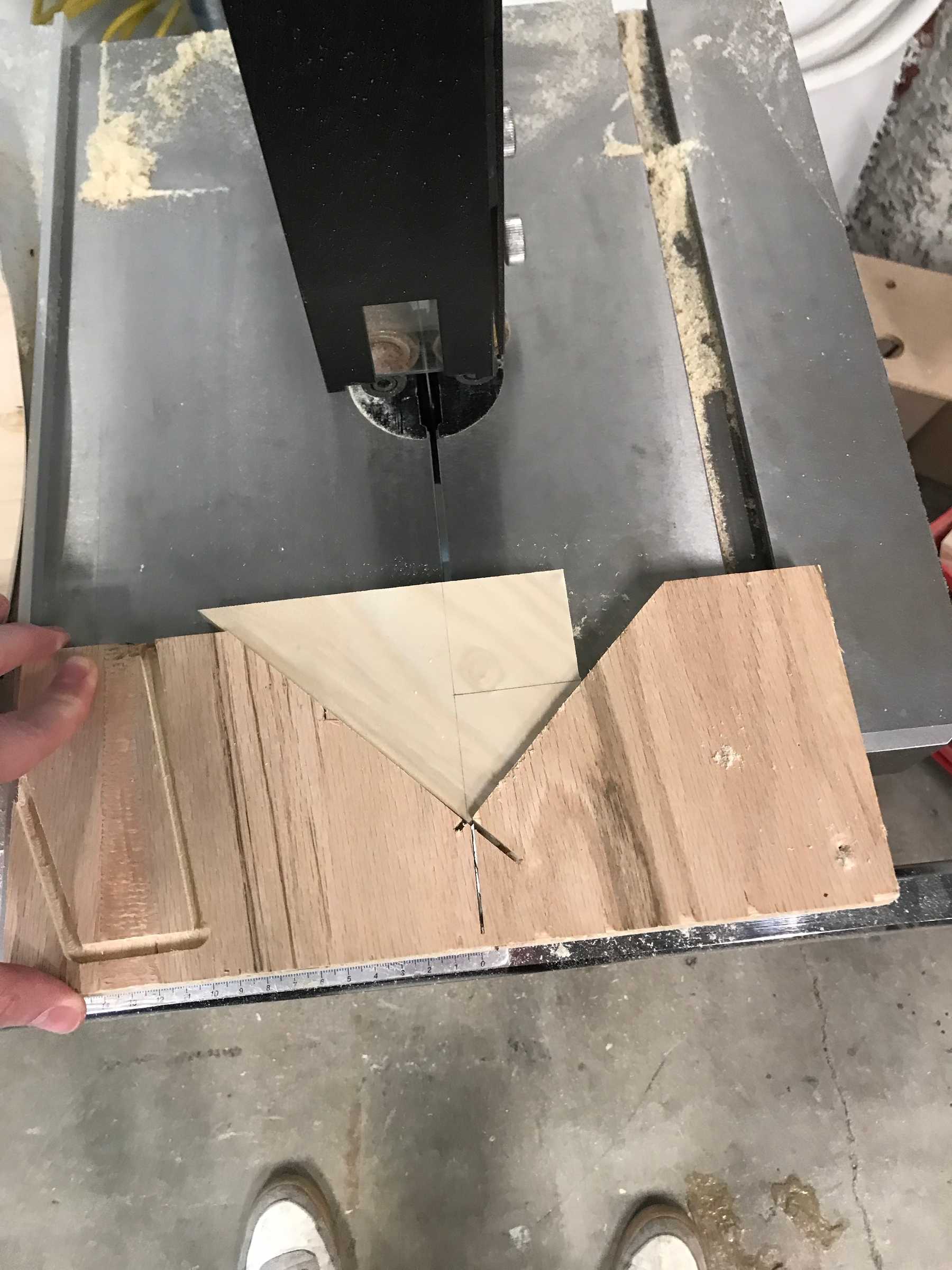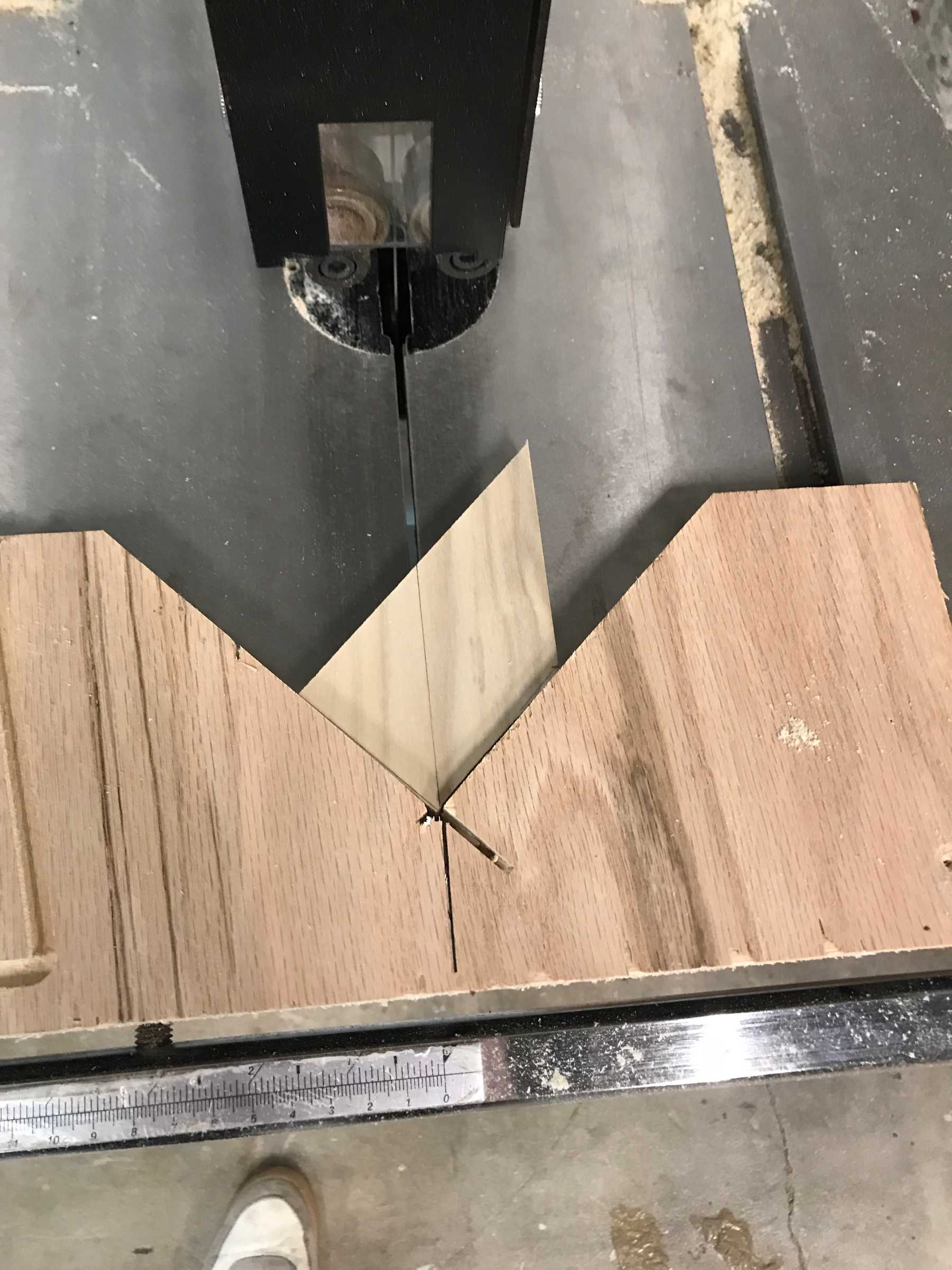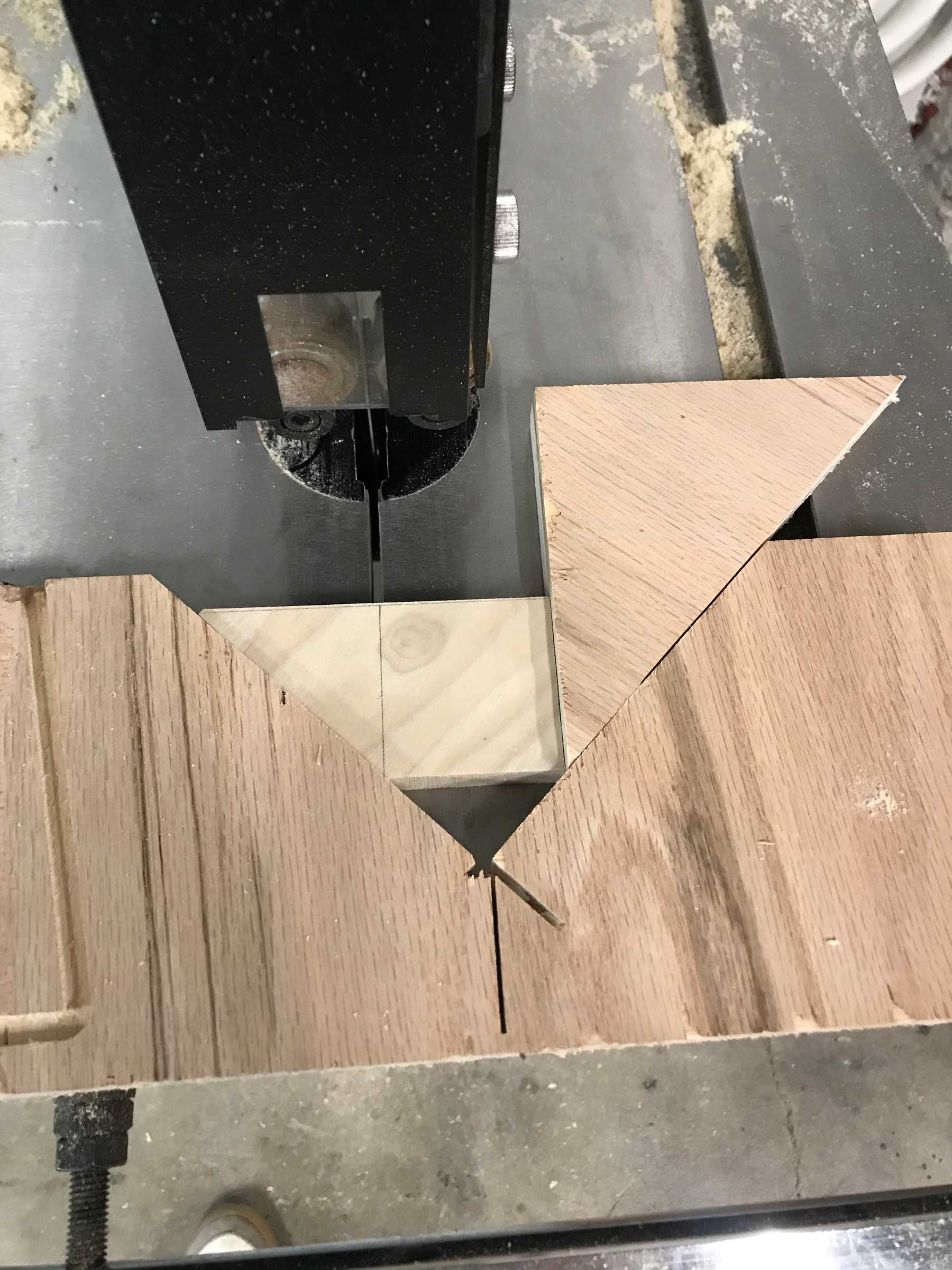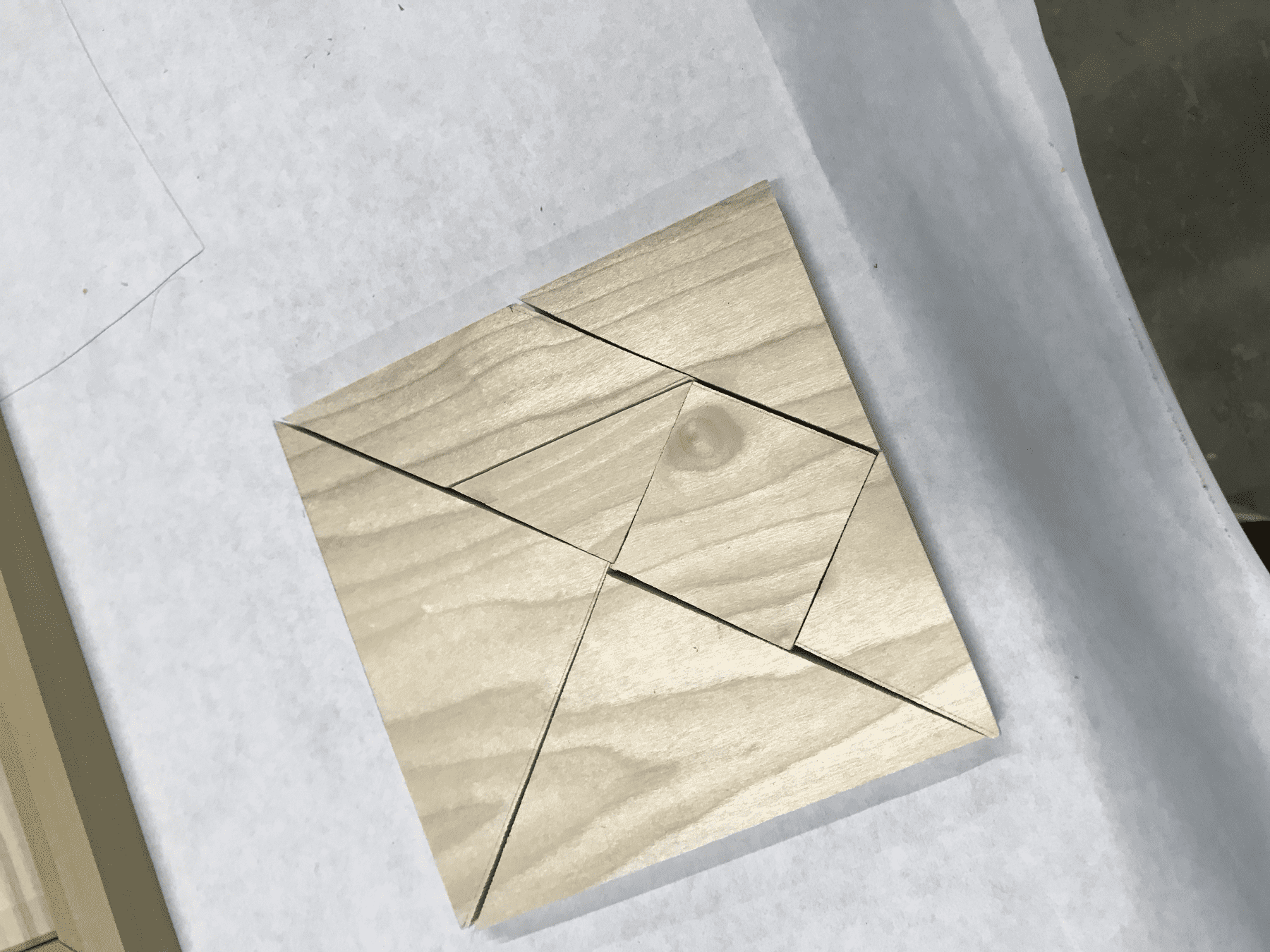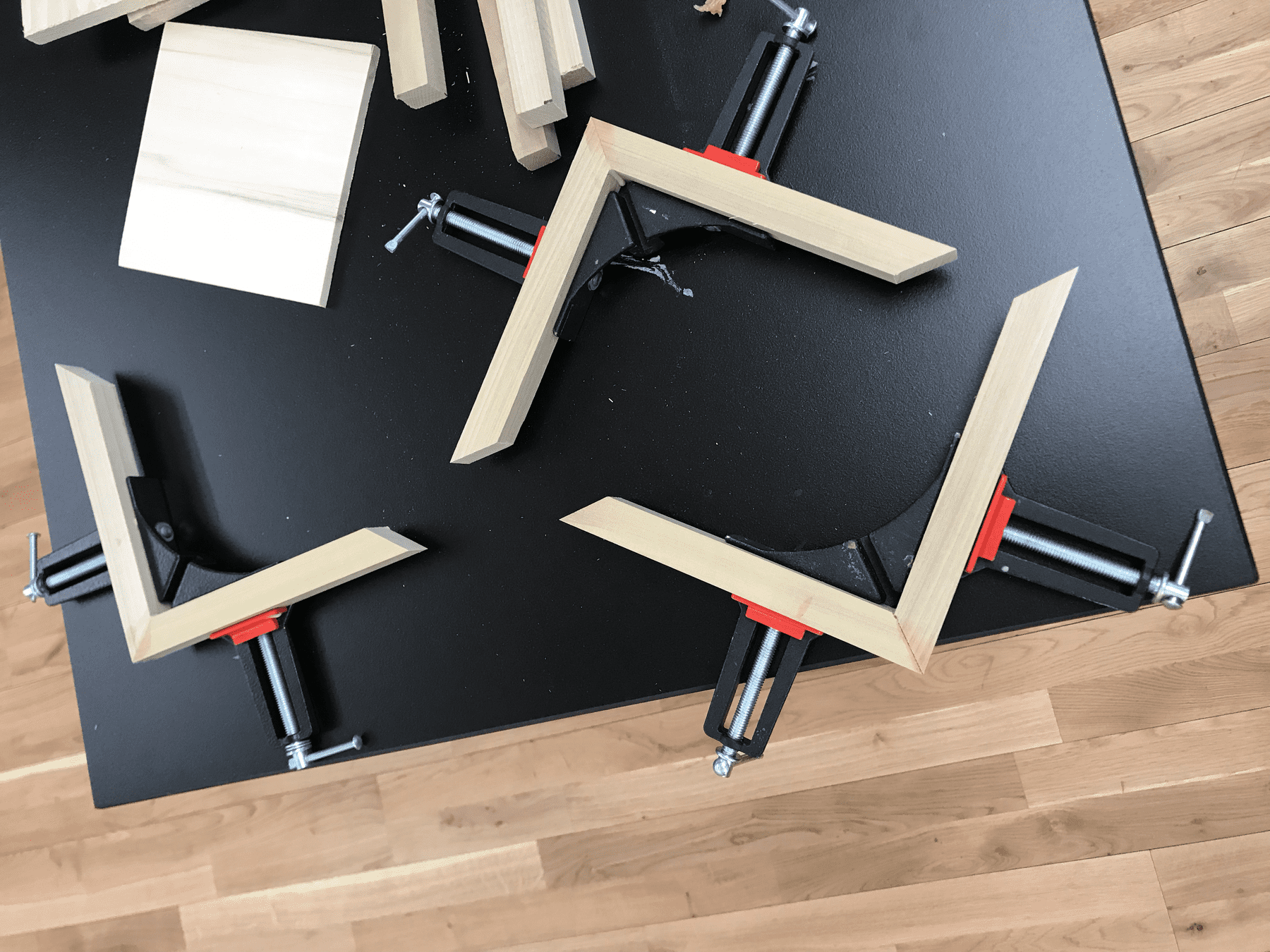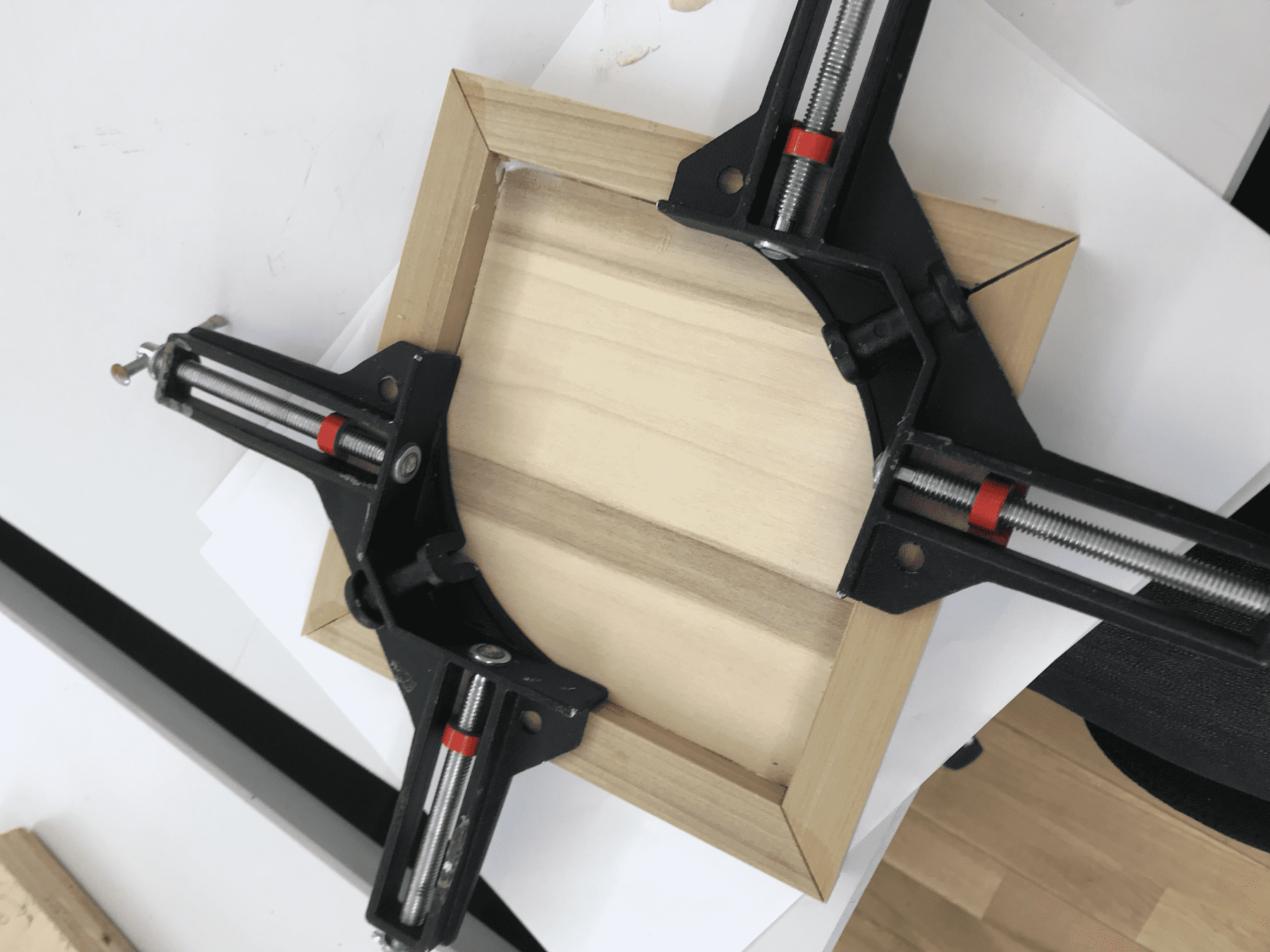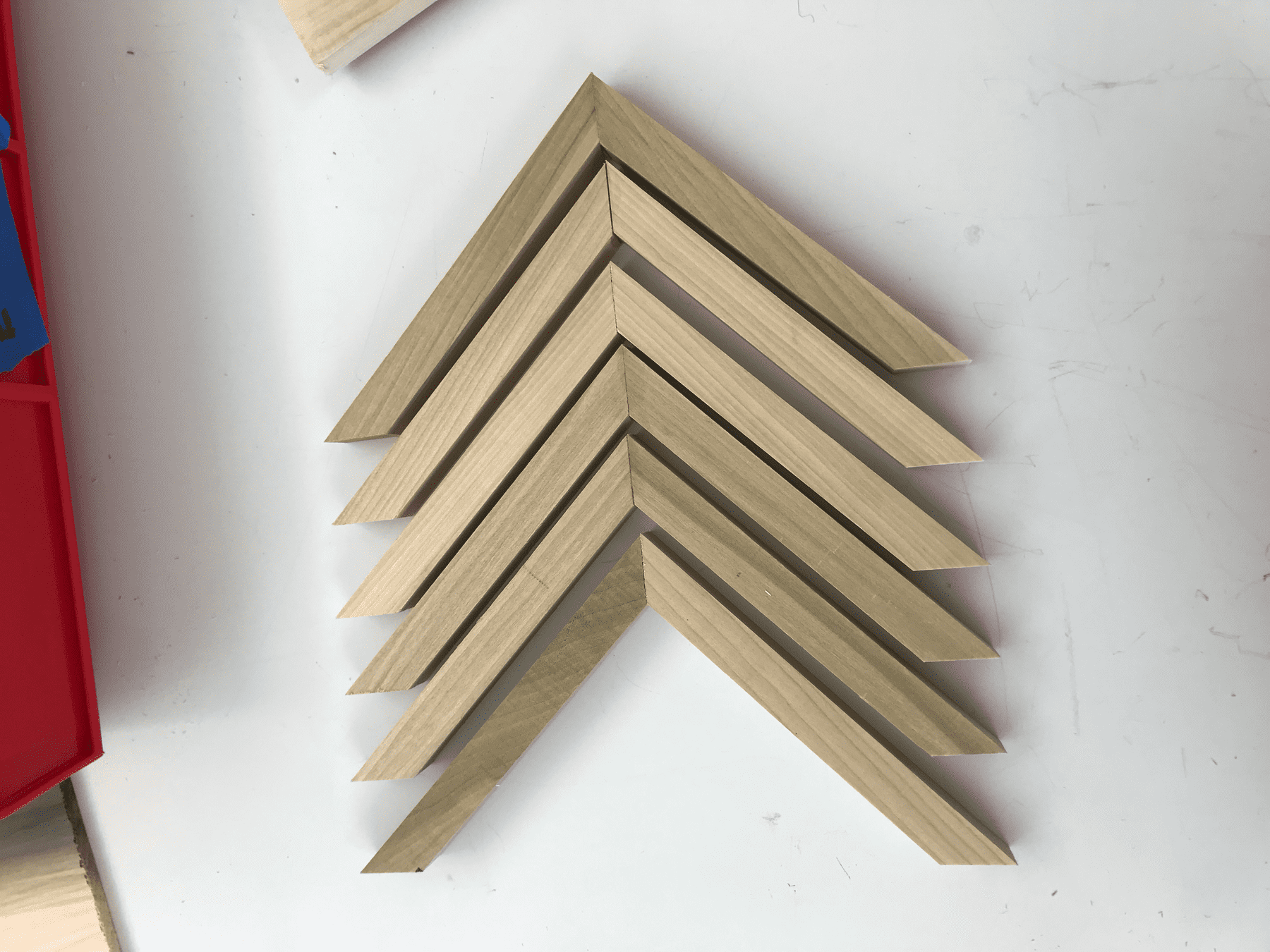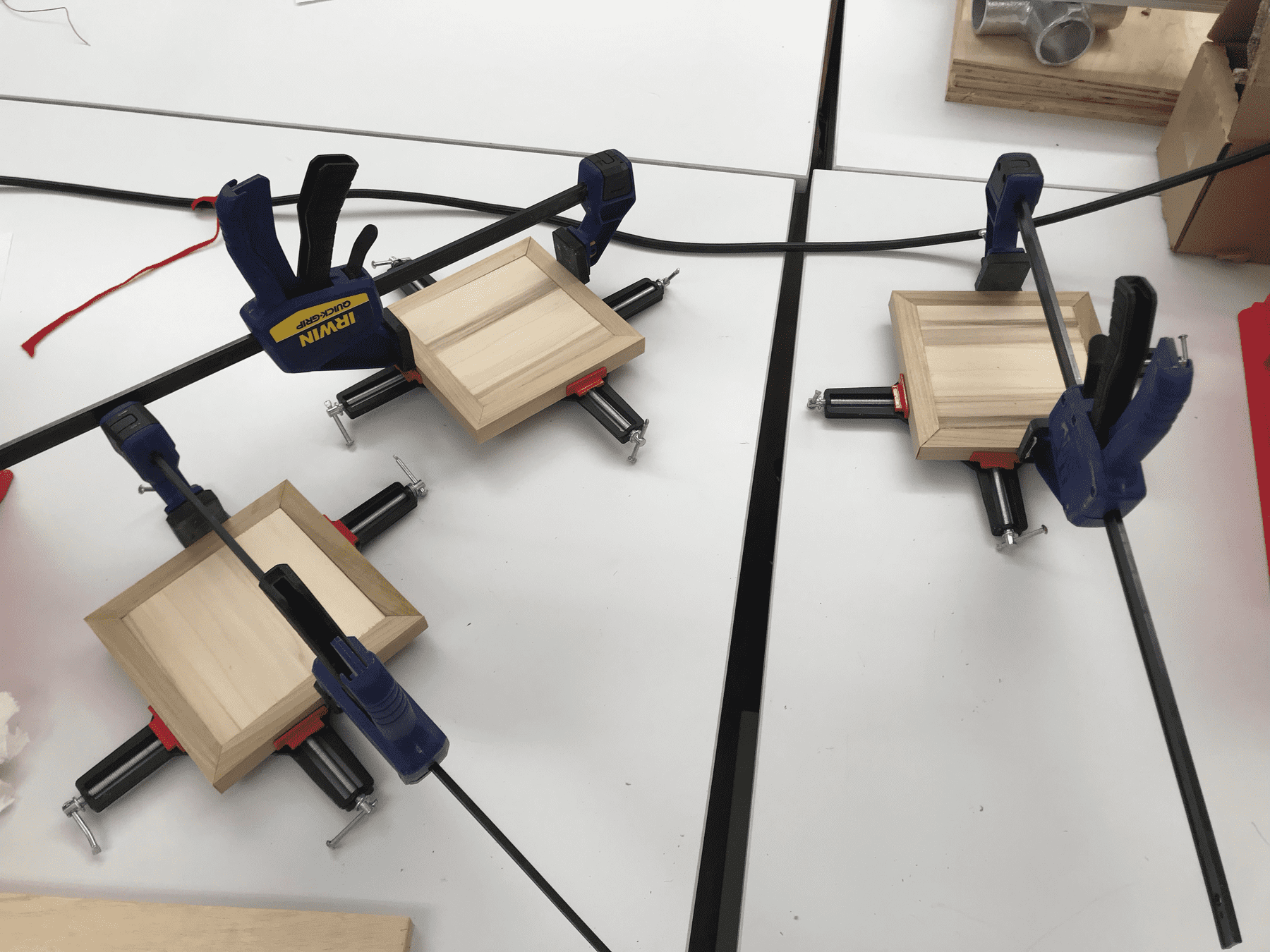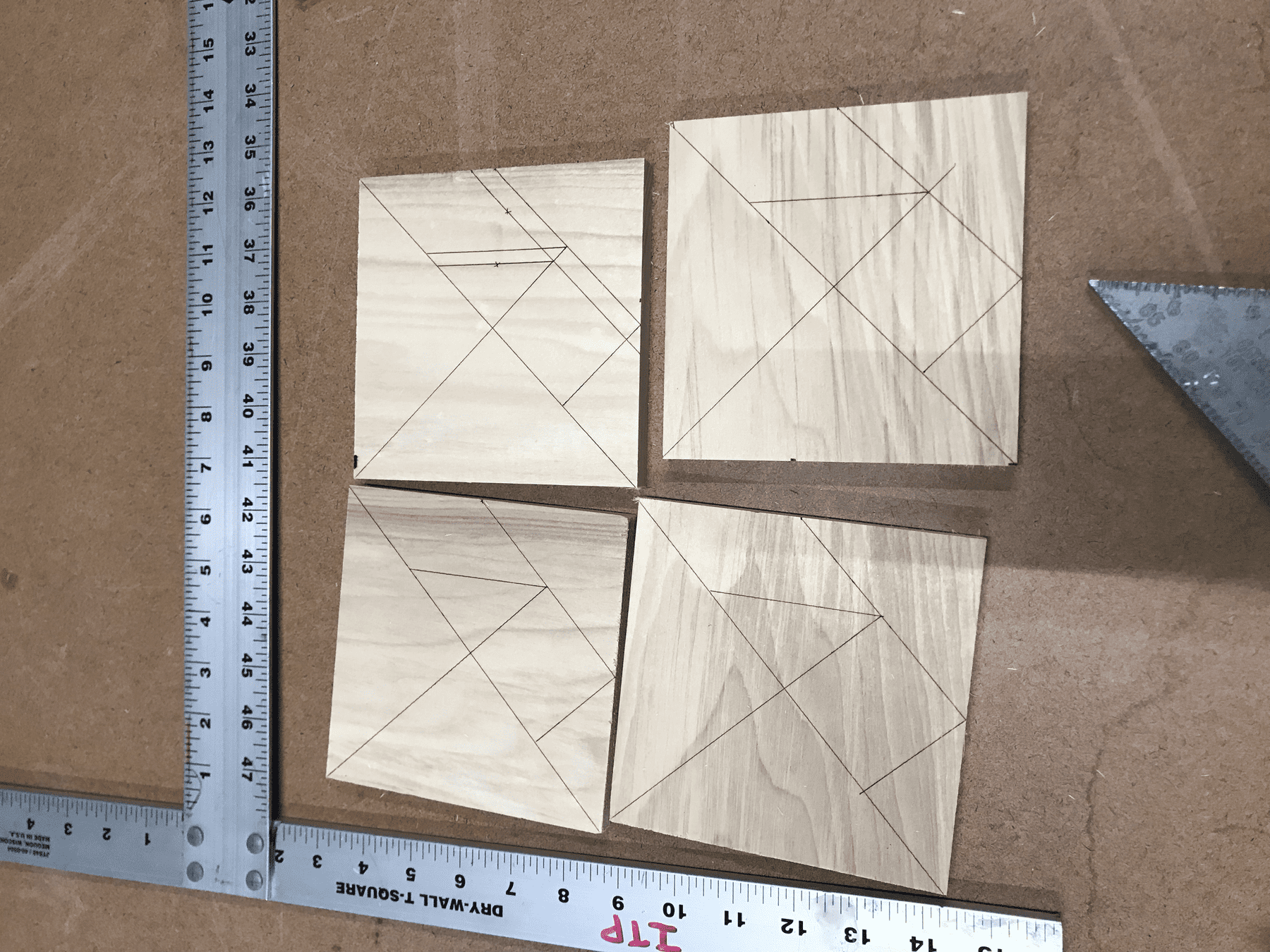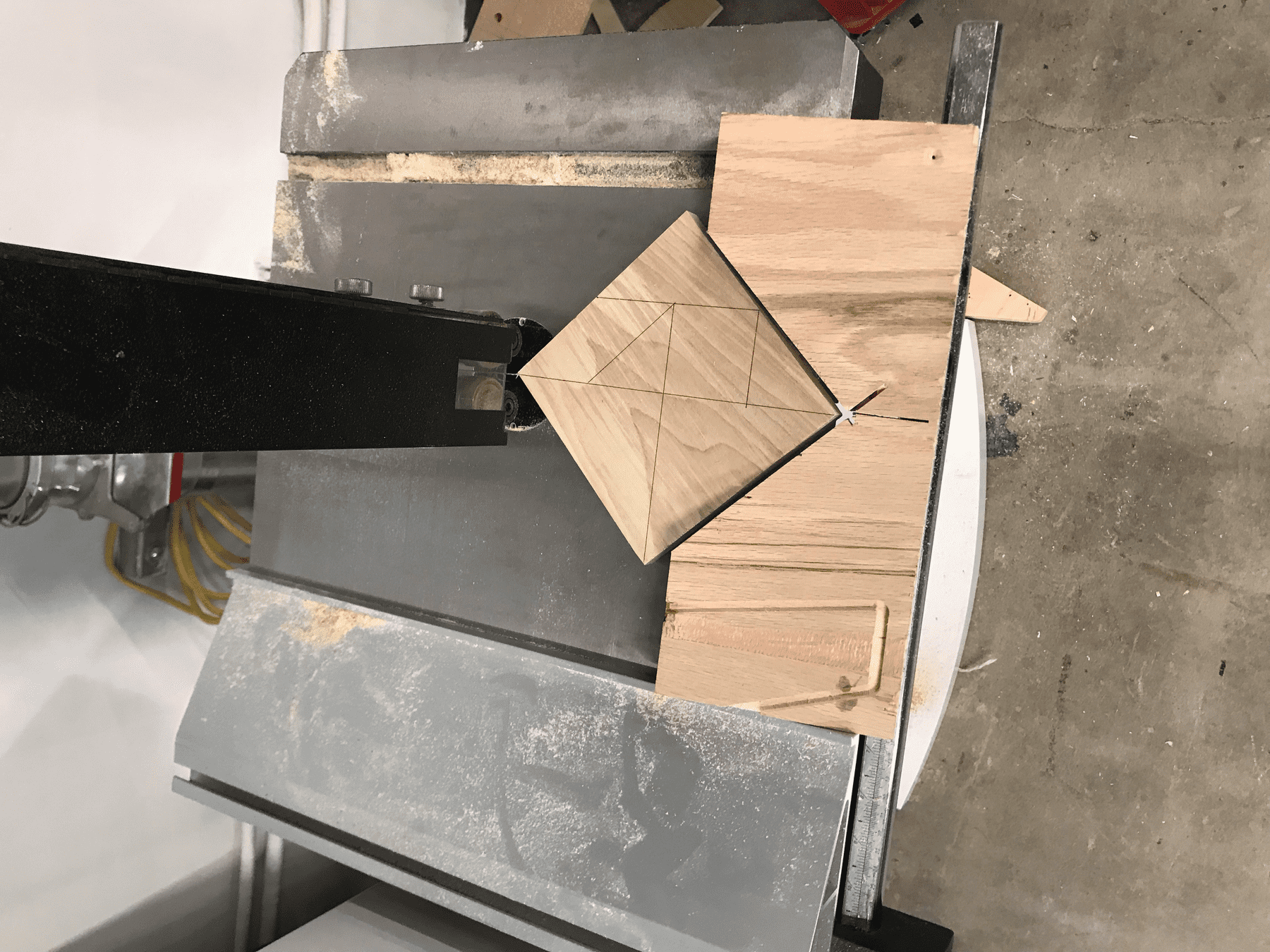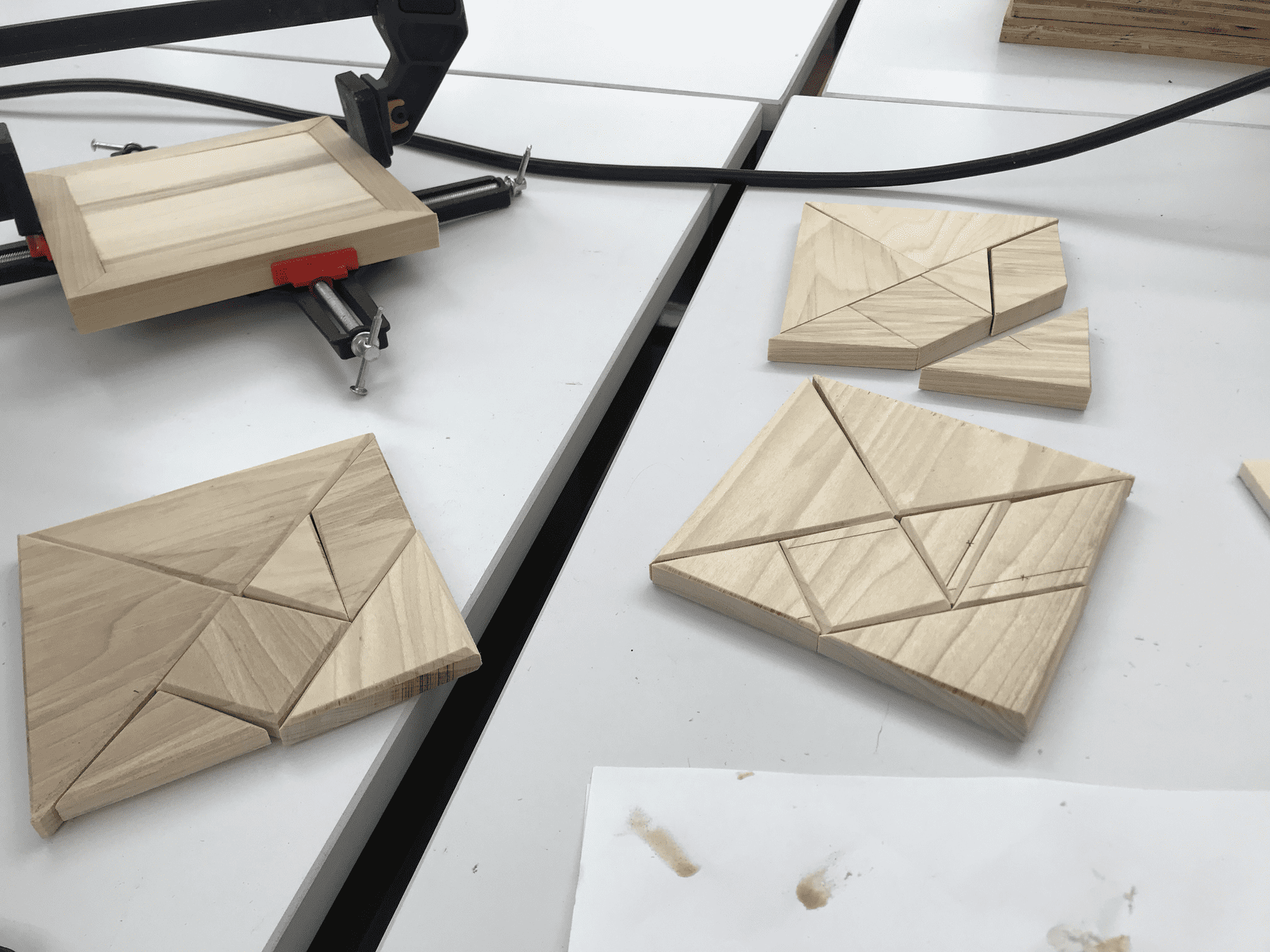Tangrams
April 05, 2021
Intro to FabricationThis week I crafted 5 sets of Tangrams — a geometric “dissection puzzle” made up of various basic shapes that assemble into a square. For each puzzle I also created a frame to hold it.
Preparations
I bought my materials (all poplar wood) from Home Depot: Two 5.5” x 0.25” x 24” sheets for the base, two 5.5” x 0.5” x 24” sheets for the tangrams, and six 0.75” x 0.75” x 36” square strips for the frame.
I used the material dimensions to inform the design. The base would be 5.5” x 5.5”, glued to the inner edge of a 0.75” frame — the total size would be 7”.
First Iteration
I started with the frame. I used the miter saw to cut square wood into equal segments. At first I measured the rod each cut — later I used a piece of wood as a buttress helped create much more consistent lengths.
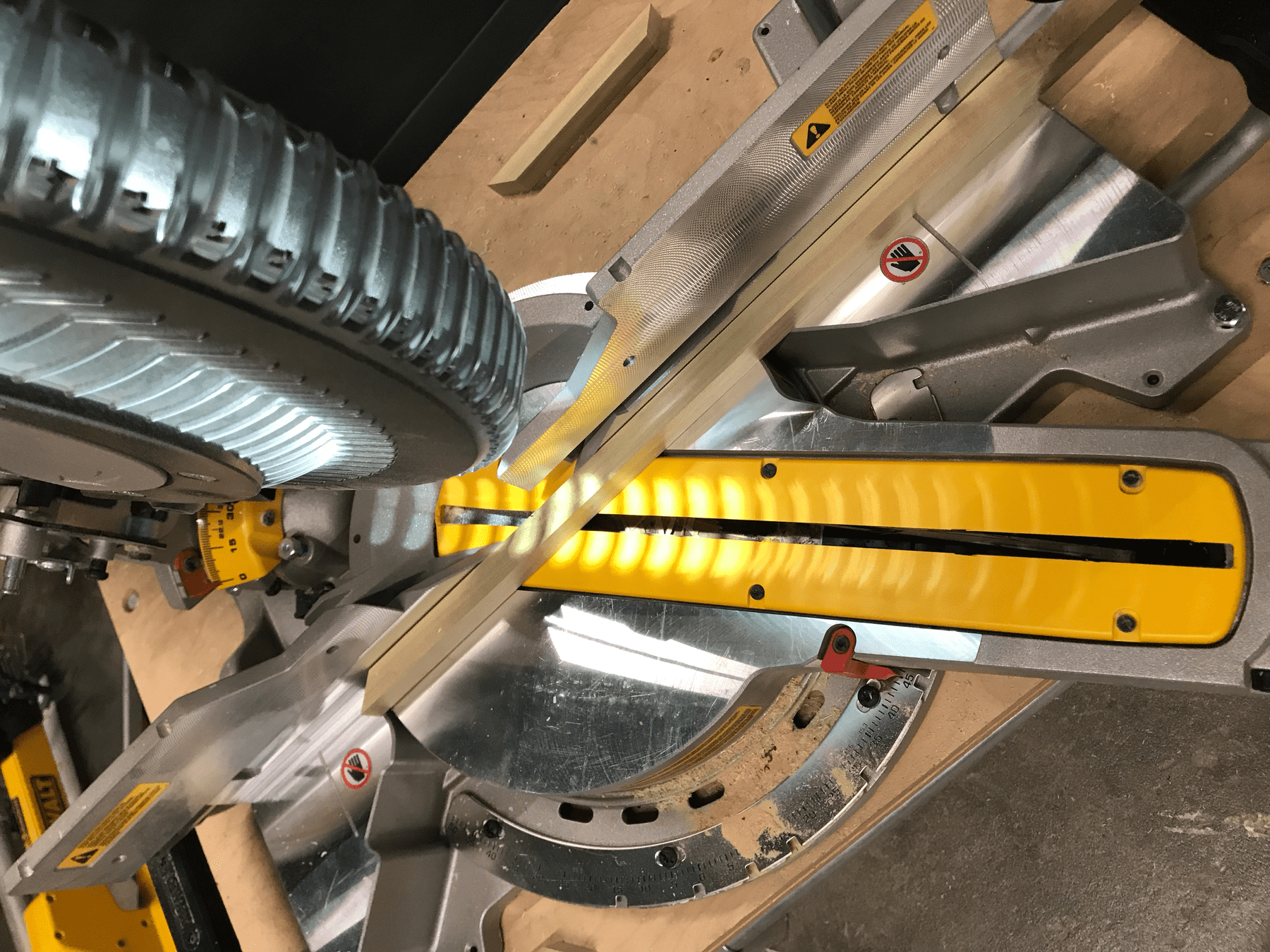 Cutting the frame using the miter saw
Cutting the frame using the miter saw
The first frame was a bit misaligned as the edges were not all exactly the same length.
Cutting the shapes
The shapes are arranged in this pattern on the square.
To cut the tangram pieces I created a jig to hold the square — simply a right angle cutout at 45 degrees to the edge.
 Creating a jig for the tangrams
Creating a jig for the tangrams
I used the jig to cut the square into the Tangram pieces. The wedge allowed my to hold the piece steady as I ran it through the band saw.
Even with the jig, the pieces were still a little mismatched.
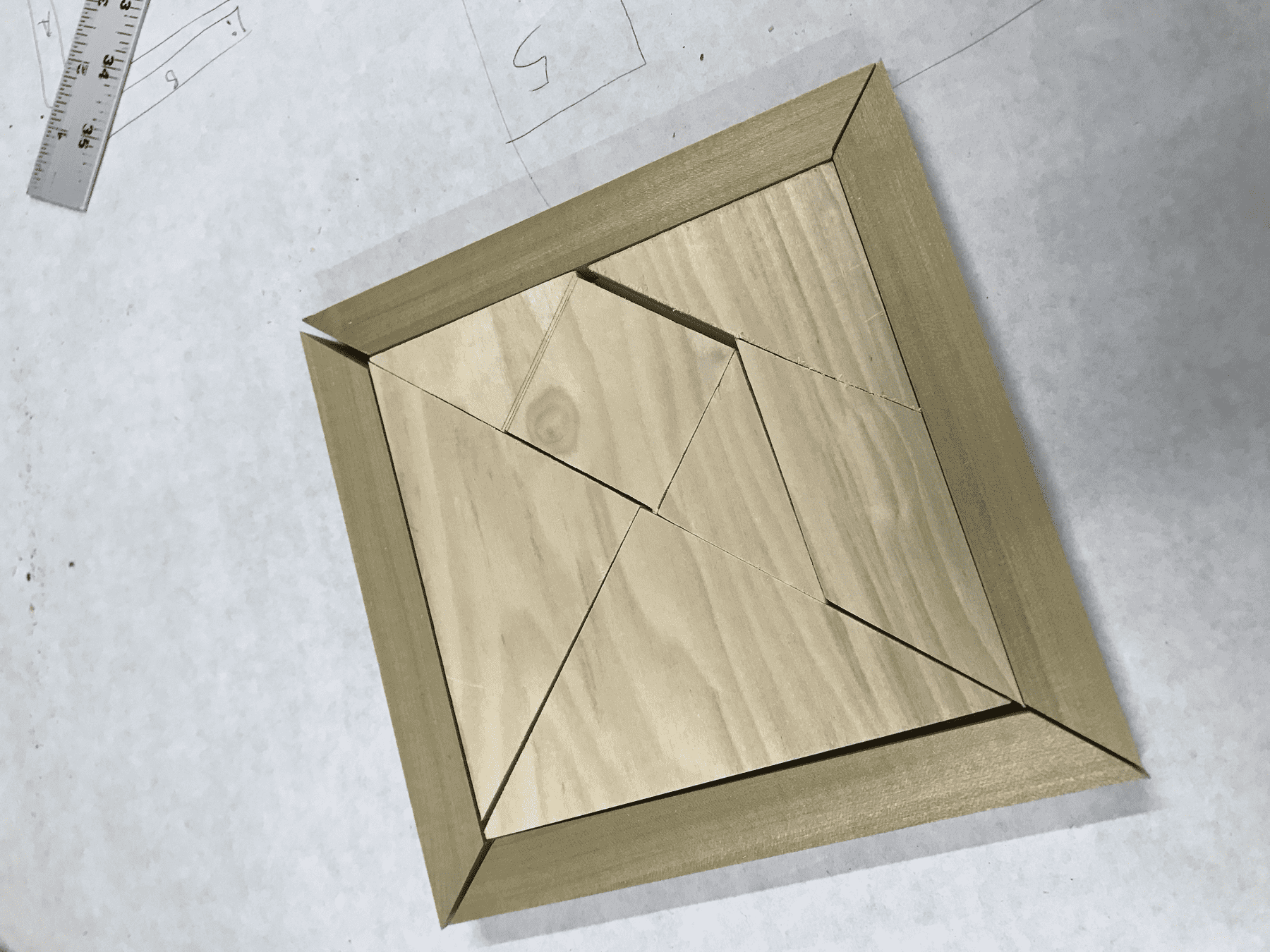 The assembled tangrams in the frame
The assembled tangrams in the frame
To assemble the frame I clued the edges in pairs, then glued the two pairs to each other and the base.
Making the Rest
Once I had the first prototype I had my process roughly defined. The one major improvement I made was using a guide for the frame cuts, which made the edges much more even.
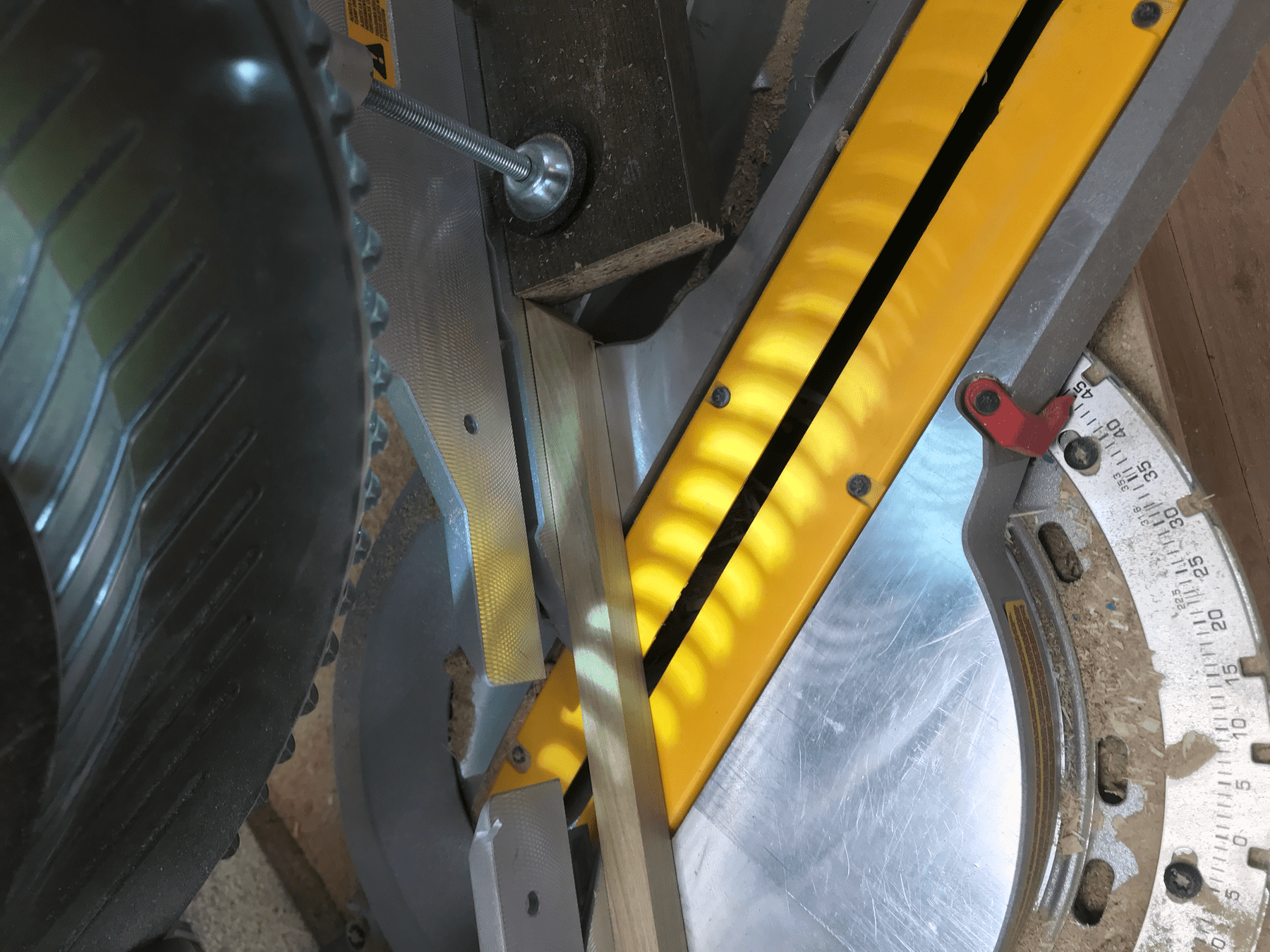 Repeatably process for cutting the frame
Repeatably process for cutting the frame
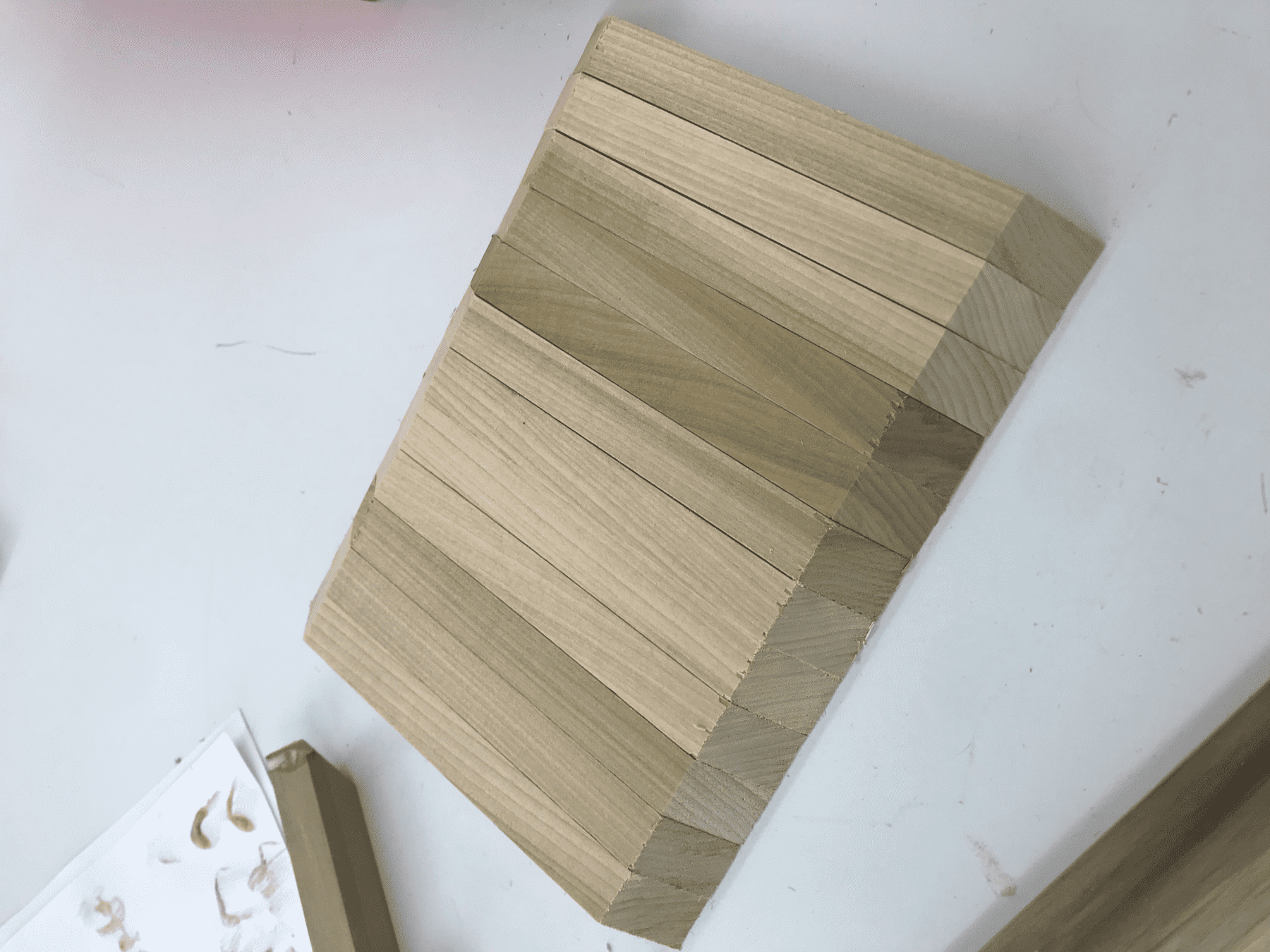 The remaining frames were much more consistent
The remaining frames were much more consistent
Following the same process, I glued the frame edges in pairs.
I glued the pairs to bases using the corner and quick clamps. Not all of the aligned perfectly — I sanded the edges and bases to make sure the fit was snug.
While the glue dried I cut the remaining pieces.
I then sanded down each piece at an angle to give them a beveled edge.
 Sanding the edges with the belt sander
Sanding the edges with the belt sander
The only thing I purposefully made different between the 5 puzzles is the amount I sanded the pieces because I wanted to see how the different versions felt. Some I left pretty straight, others I rounded more.
The Result
The final result!



